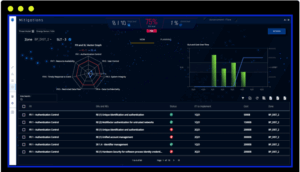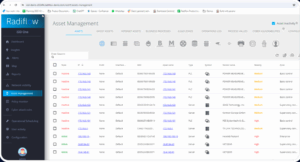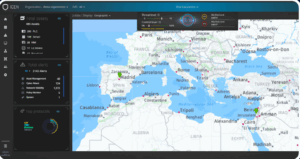The new 50% import tariff on copper, effective August 1, 2025, marks a pivotal shift in industrial economics and global trade. It affects everything from infrastructure to defense and introduces new exposure to cyber risks, especially from state-sponsored APTs (Advanced Persistent Threats).
This move is not just about trade; it has direct implications for operational resilience, supply chain security, and national cybersecurity.
Key Provisions of the Tariff
- Scope of the Tariff: 50% duty on all copper imports, including raw copper, scrap, and semi-finished goods (wires, tubes, sheets).
- Products Affected: Refined and semi-finished copper is used in electrical networks, data centers, defense systems (radars, missiles), EVs, and critical infrastructure.
- Impacted Sectors
- Construction & Real Estate: Copper price hikes will raise HVAC, piping, and MEP project costs by 20–30%.
- Automotive & EVs: An EV contains ~37 kg of copper. The tariff will add 5–8% to production costs.
- Semiconductors & AI: Copper is core to printed circuits and high-density computing. Hardware timelines and unit economics will suffer.
- Renewable Energy: Solar, wind, EV charging, and grid projects could face 0.5–2% project-wide inflation.
- Defense: While justified under national security, the tariff could create supply chain friction for military hardware.
Market Reaction
- COMEX copper prices surged 12–17% on the announcement.
- S. firms like Freeport-McMoRan (FCX) benefit from localized production (1/3 of sales via COMEX).
- SCCO (Southern Copper) sees 40% exposure to COMEX-linked sales—profits rise without import tax penalties.
- European/Asian giants (Aurubis, Prysmian, Glencore, Hindalco, Sumitomo) face reduced U.S. access, global price volatility, and export bottlenecks.
Why Copper Attracts APTs in This Climate
When a raw material becomes economically and strategically valuable, it becomes a target—not just for speculators, but for cyber adversaries. Copper now sits at the intersection of industrial value and national security. That creates new opportunities for APTs.
1. Geopolitics and APT Motivation
- Copper is now a strategic asset for:
- Energy transition (EVs, wind, solar).
- Military systems (targeting, comms, weapons).
- Critical infrastructure (power grid, transportation, telecoms).
- Rising prices and trade barriers drive:
- Realignment of supply chains.
- State-driven interest in resource intelligence.
- Cyber-espionage and sabotage as tools of influence.
2. APTs to Watch
| APT Group |
Nation-State Sponsor |
Likely Objective |
| APT41 / Barium |
China |
IP theft, supply chain compromise |
| APT28 / Fancy Bear |
Russia |
Economic disruption, destabilization |
| Chafer |
Iran |
Industrial surveillance |
| APT33 / Elfin |
Iran |
ICS disruption, long-term persistence |
| Lazarus Group |
North Korea |
Extortion, disruption, economic theft |
3. Who Is Now a Prime Target?
Countries:
- High-value producers: Chile, Peru, Zambia, Australia, Canada
- High-demand markets: U.S., EU, Japan
Organizations:
- Mining operations, refiners, logistics firms
- OEMs and suppliers involved in copper-based production chains
- Energy and defence contractors
4. Price Hikes = Increased Attack Surface
- Greater financial leverage for attackers: Sabotage or disruption now yields a greater return.
- Surging IP value: Optimizing extraction, refining, or automated control logic becomes a high-value cyber target.
Example: Compromising SCADA systems in a copper mine could:
- Halt production.
- Falsify extraction volumes.
- Leak confidential geological data.
5. Why Copper Companies Face Higher APT Risk
- Uncontrolled expansion of supply chain vendors and systems.
- Increased use of third-party software (ERP, HMI, cloud-connected tools).
- Growing strategic value of operational processes and IP.
Likely Techniques (Mapped to MITRE ATT&CK for ICS)
| Tactic |
Technique |
Example |
| Initial Access |
Spearphishing, Valid Accounts |
Compromising a logistics partner |
| Execution |
Command-Line Interface |
Malicious OT script deployment |
| Lateral Movement |
Remote Services, External VPN |
Pivoting inside ICS networks |
| Impact |
Inhibit Response Function, Modify Control Logic |
Shutdowns or dangerous process deviations |
How to Reduce Exposure (Using IEC 62443 & NIST SP 800-82)
1. Architectural Defense
- Use ISA/IEC 62443-3-2 to define zones and conduits.
- Apply SL2 or SL3 for critical systems.
2. Risk Governance
- Adopt a Cyber Security Management System (CSMS) per IEC 62443-2-1.
- Include continuous monitoring (NIST 800-137).
- Audit third-party OT suppliers (IEC 62443-2-4).
3. Incident-Driven Strategy
- Reference attack patterns from:
- Triton (2017): Targeted SIS sabotage
- SolarWinds (2020): IT–OT pivot via supply chain
- BlackEnergy (2015): Grid disruption
Why Radiflow Is Strategic for OT Governance & Risk Reduction
Radiflow delivers tailored OT cyber risk intelligence and active threat detection:
1. Risk Modeling (CIARA)
- Imports network topology and asset data.
- Evaluates vulnerabilities and calculates operational risk using IEC 62443, NIST SP 800-82, MITRE ICS mappings.
- Outputs measurable, live risk profiles.

The CIARA dashboard: detected Zones are displayed in a color-coded risk level array
2. Threat Monitoring (iCEN/iSID)
- Detects APT behaviors (lateral movement, protocol misuse, config tampering).
- Maps live telemetry to ATT&CK techniques.
- Integrates STIX/TAXII threat intel feeds.

iSID provides real-time alerts and asset inventory
3. Governance Platform
- Designs and validates OT segmentation.
- Guides risk-based control investments.
- Supports audit trails for NIS2, ISO 27001, and IEC 62443 compliance.

iCEN aggregates the monitoring alarm and information from different iSIDs installed in the plants and correlates to risk insight by CIARA
4. Practical Business Value for the Copper Sector
- Identifies high-value OT targets (e.g., PLCs in concentrators or smelters).
- Flag anomalies before disruption.
- Accelerates incident response and board-level reporting.
If you’re operating in copper extraction, refining, energy, or transport infrastructure, now is the time to:
- Reassess OT cyber risk posture.
- Map exposure to geopolitical volatility.
- Bring OT security into core governance.






